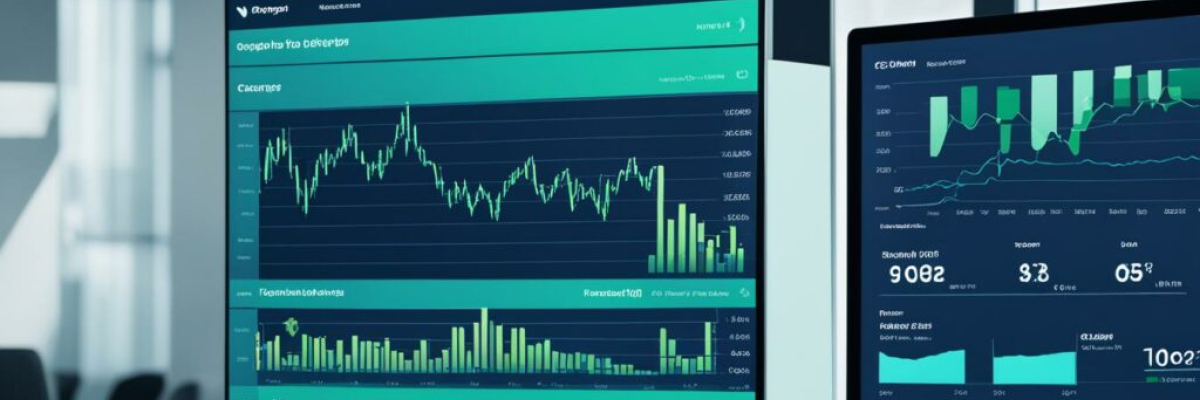Cardano’s Charles Hoskinson Debates Security Status with Blockstream’s Adam Back
The co-founder of Input Output Global and brainchild behind the Cardano network, Charles Hoskinson, recently vented his frustrations in a video about how the U.S. securities regulator has labeled the Cardano cryptocurrency (ADA) as a security. He found it baffling and criticized the regulatory body for exempting Bitcoin from the same classification, mockingly referring to Bitcoin advocates as “Team Orange” and hinting at preferential treatment.
ADA vs. BTC: A Regulatory Conundrum
Hoskinson’s aggravation was palpable in a video clip where he dissected the rationale behind ADA’s security designation, drawing a contrast with Bitcoin (BTC) and others in the digital currency realm. He pointed out the perceived oddity that Bitcoin enthusiasts have no profit expectation, calling out the supposed decentralization of Bitcoin. Hoskinson noted that a few key entities have the power to control the digital ledger, ostensibly through a 51% attack, given the centralized nature of the network’s hash power. He minced no words in calling the situation a grossly ridiculous oversight.
The reaction to Hoskinson’s provocative commentary sparked a discourse on social media, where Blockstream’s founder Adam Back entered the fray. Back attempted to simplify the distinction between ADA and BTC, stating that Bitcoin did not undergo an ICO, had no perceived value in its infancy, was mined from square one, and operates in a decentralized manner without a CEO or centralized foundation. Thus, according to Back, Cardano along with others like ETH evidently fit within the Howey test’s scope, whereas Bitcoin is deemed a commodity and not a security.
In retort, Hoskinson clarified that Cardano never engaged in an ICO. Instead, he described an airdrop and subsequent exchange of ADA tokens by a global community that also leveraged the platform for diverse projects. He pointed out that selling a different asset for yen, outside of the United States, and exclusively to Japanese citizens cannot be cast as an ICO for ADA.
Historically, as per Cardano’s Genesis records, ADA token vouchers were sold in Asia between October 2015 and January 2017, ultimately raising an equivalent of 108,844.5 BTC. These sales were carried out by a Japanese entity. Back, challenging Hoskinson’s description, suggested that an airdrop, premine, and some market activity might still fall within the definition of an ICO, also inferring that profit expectations hinge on a management team.
Escalating Tensions in the Crypto Community
Hoskinson rebutted again, arguing that an airdrop doesn’t equate to an initial coin offering, pointing out the SEC’s own lack of clarity. He cited the SEC’s settlement with EOS and Block.one as a relevant instance. He underscored ADA’s distribution model, contrasting it against Ethereum’s publicly offered ICO, which has yet to be classified as a security.
Hoskinson’s vexation was clear as he condemned the Bitcoin-centrist community for considering other blockchain projects as secondary or scams. He accused Bitcoin proponents of attempting to influence U.S. authorities to criminalize cryptocurrencies except for Bitcoin. He also repudiated the notion of Bitcoin’s mining process being unique, mentioning that Satoshi Nakamoto, the enigmatic creator of Bitcoin, initially dominated the network and remained anonymous due to the legal uncertainties.
In response, the Blockstream executive likened Bitcoin to gold and diamonds, contending that neither are securities. While sovereign entities may influence gold and companies like Debeers control diamond values, Back held that just like these commodities, Bitcoin does not fit the security classification. In stark opposition, he classified assets such as ether and ADA as securities, asserting they are unregistered and cannot be registered.
As the debate heats up, what are your perspectives on the matter between Hoskinson and Back? We are keen to know your thoughts on this hot-button issue in the comments below.

Frequently asked Questions
1. What are the main concerns surrounding crypto security?
Answer: The main concerns surrounding crypto security include the vulnerability of digital wallets, the risk of hacking and theft, potential flaws in blockchain protocols, and the need for secure cryptographic algorithms.
2. How does Charles Hoskinson approach crypto security in Cardano?
Answer: Charles Hoskinson, the founder of Cardano, emphasizes a rigorous and scientific approach to crypto security. Cardano aims to enhance security through peer-reviewed research, formal methods, and a layered architecture that separates critical components.
3. What is Adam Back’s perspective on crypto security at Blockstream?
Answer: Adam Back, the CEO of Blockstream, believes in the importance of strong cryptography as a foundation for crypto security. Blockstream focuses on developing and enhancing cryptographic technologies, such as the Bitcoin protocol, to ensure a secure and resilient ecosystem.
4. How do Charles Hoskinson and Adam Back differ in their views on crypto security?
Answer: Charles Hoskinson and Adam Back have differing views on crypto security. While both prioritize security, Hoskinson’s approach emphasizes scientific research and formal methods, while Back focuses on cryptographic technologies and protocols.
5. What are the key initiatives taken by Cardano to enhance crypto security?
Answer: Cardano has implemented various initiatives to enhance crypto security, including a meticulous peer-review process for protocol updates, collaborations with academic institutions, and the use of formal methods to mathematically prove the correctness of their code.
6. How does Blockstream contribute to crypto security in the industry?
Answer: Blockstream contributes to crypto security by actively participating in the development and enhancement of cryptographic technologies, particularly in the Bitcoin ecosystem. Their focus on privacy, scalability, and decentralization aims to improve the overall security of blockchain networks.
7. Can the collaboration between Cardano and Blockstream further improve crypto security?
Answer: The collaboration between Cardano and Blockstream has the potential to further improve crypto security. By combining Cardano’s scientific approach and formal methods with Blockstream’s expertise in cryptographic technologies, new advancements in security could be achieved, benefiting the entire crypto industry.










